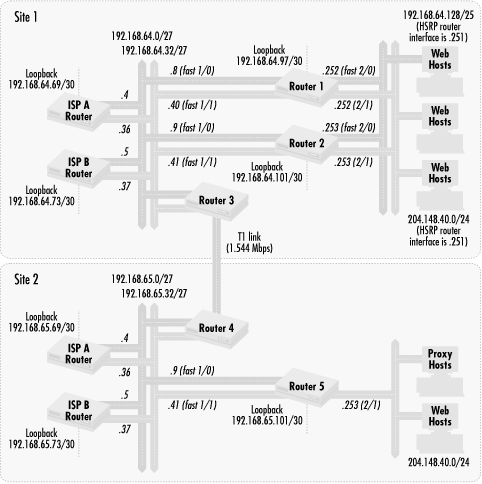An Internet routing case study
In this example, I show the use of access lists with Internet routing. Figure 7.3 shows a network diagram of an organization doing web hosting.

Figure 7-3. Network for an Internet routing case study
The organization has two sites, Site 1 and Site 2, each connected to two ISPs, A and B. ISP A has usage-based pricing while ISP B charges a flat rate. There are two sets of web servers, one on network 198.6.224.128/25 and another on 204.148.40.0/24. We want to get the best possible performance for the web hosts on 198.6.224.128/25. Traffic to and from 204.148.40.0/24 is a lower priority.
To ensure higher availability, two routers connect the web servers in Site 1 to the Internet. Using Cisco’s Hot Standby Routing Protocol (HSRP), we have a path to and from the Internet even if one router is unavailable. We also have two different networks between the routers in front of the web servers and ISP routers. If one of the networks goes down, the other is still available to pass traffic to the Internet. Note also that both ISP routers are managed by their respective ISPs and not by the organization.
Site 2 contains some web servers as well as proxy servers for general use by that site. Of greatest interest is the fact that it is connected Site 1 and has connections to the same ISPs as Site 1.
Let’s articulate the policies we wish to implement. In this example, I ...
Get Cisco IOS Access Lists now with the O’Reilly learning platform.
O’Reilly members experience books, live events, courses curated by job role, and more from O’Reilly and nearly 200 top publishers.

